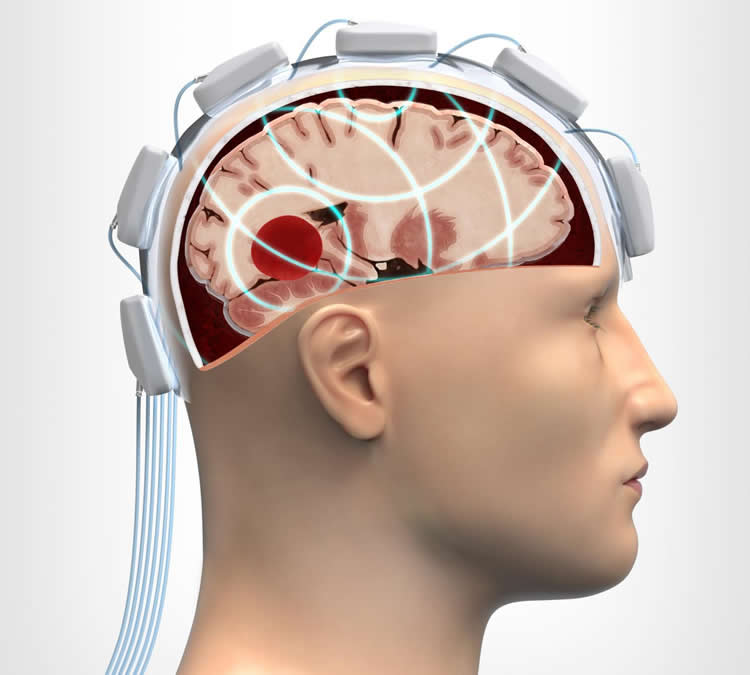Summary: A new study reports microwave measurements can rapidly detect intracranial bleeding in those who suffer TBI.
Source: Chalmers University of Technology.
Results from a clinical study demonstrates that microwave measurements can be used for a rapid detection of intracranial bleeding in traumatic brain injuries.
A recently published scientific paper shows that health care professionals get vital information and can quickly decide on appropriate treatment if patients are examined using a microwave helmet.
The study demonstrates a new health care application for microwave measurements. Previously, microwave measurements have been used to distinguish stroke caused by bleeding in the brain from stroke caused by cloth.
The new study shows that the technology also applies to patients affected by traumatic brain injury, which is the most common cause of death and disability among young people. This type of injuries are often caused by traffic accidents, assaults or falls. An estimated 10 million people are affected annually by traumatic brain injuries.
The study compared 20 patients hospitalized for surgery of chronic subdural hematoma – a serious form of intracranial bleeding – with 20 healthy volunteers. The patients were examined with microwave measurements which were compared to traditional CT scans. The results show that microwave measurements have great potential to detect intracranial bleeding in this group of patients.

“The result is very promising even though the study is small and only focused on one type of head injury. The microwave helmet could improve the medical assessment of traumatic head injuries even before the patient arrives at the hospital”, says Johan Ljungqvist specialist in neurosurgery at the Sahlgrenska University Hospital. “The result indicates that the microwave measurements can be useful in ambulances and in other care settings.”
Further studies of acute head injury patients are ongoing and planned in Sweden and abroad.
“Microwave technology has the potential to revolutionize medical diagnostics by enabling faster, more flexible and more cost-effective care”, says Mikael Persson, professor of biomedical engineering at Chalmers University of Technology. “In many parts of the world microwave measurements systems can become a complement to CT scans and other imaging systems, which are often missing or have long waiting lists.”
“It is challenging to develop a new clinical methodology, from early tests to a device for clinical use in a hyperacute clinical environment where routine care of patients cannot be delayed. It requires a close collaboration between technical and medical professionals which has been supported by MedTech West, a western Sweden based organization for med-tech research & development driven by clinical need”, says Mikael Elam, professor of clinical neurophysiology, Sahlgrenska Academy and University Hospital.
Facts about microwave measurements
A microwave helmet is placed on the patient’s head and the brain tissue is examined with the aid of microwave radiation. The system consists of three parts: a helmet-like antenna system that is put on the patient’s head, a microwave unit and a computer that is used to control the equipment, data acquisition and signal processing. Individual antennas in system transmit, in sequence, a weak microwave signals through the brain, while the other receiving antennas measure the reflected signals. Distinct structures and substances in the brain affect the microwave scattering and reflections in different ways and the received signals provides a complex pattern, as interpreted by using advanced algorithms.
Funding: The funding for this study was provided by Swedish Research Council’s program for clinical research.
Source: Christian Borg – Chalmers University of Technology
Image Source: NeuroscienceNews.com image is credited to Boid.
Original Research: Full open access research for “Clinical evaluation of a microwave-based device for detection of traumatic intracranial hemorrhage” by Johan Carl Ljungqvist, Stefan Candefjord, Mikael Persson, Lars Jönsson, Thomas S Skoglund, Mikael Elam in Journal of Neurotrauma. Published online February 2017 doi:10.1089/neu.2016.4869
[cbtabs][cbtab title=”MLA”]Chalmers University of Technology “Microwave Helmet Yields Fast and Safe Evaluation of Head Injuries.” NeuroscienceNews. NeuroscienceNews, 11 March 2017.
<https://neurosciencenews.com/microwave-helmet-tbi-6233/>.[/cbtab][cbtab title=”APA”]Chalmers University of Technology (2017, March 11). Microwave Helmet Yields Fast and Safe Evaluation of Head Injuries. NeuroscienceNew. Retrieved March 11, 2017 from https://neurosciencenews.com/microwave-helmet-tbi-6233/[/cbtab][cbtab title=”Chicago”]Chalmers University of Technology “Microwave Helmet Yields Fast and Safe Evaluation of Head Injuries.” https://neurosciencenews.com/microwave-helmet-tbi-6233/ (accessed March 11, 2017).[/cbtab][/cbtabs]
Abstract
Clinical evaluation of a microwave-based device for detection of traumatic intracranial hemorrhage
Traumatic Brain injury (TBI) is the leading cause of death and disability among young people. A key to improve outcome for patients with TBI is to reduce the time from injury to definitive care by achieving a high triage accuracy. Microwave technology (MWT) allows for a portable device to be used in the prehospital setting for detection of intracranial hematomas at the scene of injury, thereby enhancing early triage and allowing for more adequate early care. MWT has previously been evaluated for medical applications including the ability to differentiate between hemorrhagic and ischemic stroke. The purpose of this study was to test whether MWT in conjunction with a diagnostic mathematical algorithm could be used as a medical screening tool to differentiate patients with traumatic intracranial hematomas, chronic subdural hematomas (cSDH), from a healthy control (HC) group.
20 patients with cSDH and 20 HC were measured with a MWT device. The accuracy of the diagnostic algorithm was assessed using a leave-one-out analysis. At 100 % sensitivity, the specificity was 75 %, i.e. all hematomas were detected at the cost of 25 % false positives (patients who would be overtriaged).
Considering the need for methods to identify patients with intracranial hematomas in the prehospital setting, MWT shows promise as a tool to improve triage accuracy. Further studies are underway to evaluate MWT in patients with other intracranial hemorrhages.
“Clinical evaluation of a microwave-based device for detection of traumatic intracranial hemorrhage” by Johan Carl Ljungqvist, Stefan Candefjord, Mikael Persson, Lars Jönsson, Thomas S Skoglund, Mikael Elam in Journal of Neurotrauma. Published online February 2017 doi:10.1089/neu.2016.4869






